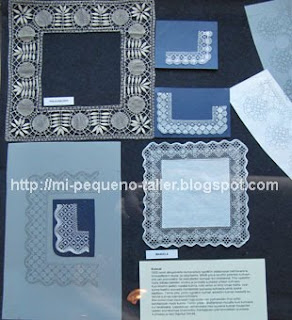But Finland is much more than that. And, speaking of lace, it is important to know that it has been made in the past and still made today. Rauma is one of the most representative cities in the field of bobbin lace, having its own Lace Museum, a Lace Association, a statue of a a lacer and a few shops where you can buy lace and jewels with lace motives.
The exact date of the beginnings of lace in Rauma is not known for certain. But there are documents that mention the year 1754 as the year of the creation of a lace industry there. By then, the arrt of making lace was already well know. At the end of the 18th century, lace bonnets were made. They were very fashionable at those times.

After a short walk in Old Rauma, with narrow pebbled streets and wooden houses, I went into the Lace Museum. It is located in the Old Townhall. A small building, whit small exhibition rooms.
I must admit I was a bit disappointed when I saw that the museum had only two rooms. But I had to correct inmediately, seeing the huge amount of laces exhibited. Rauma Lace Museum has about one thousand bobbin laces, apart from the bonnets, dating the oldest from the beginnings of 19th century, and hundreds of patterns and prickings.
Each lace has a name to identify it, normally inspired in the shape of the motifs or on the name of the lacer who did it.
In Rauma, two types of lace are made. The oldest are torchon and guipur type, which remind me of the Spanish popular laces. But they are worked with a finer thread. From the 19th Century onwards, ground laces are made in Rauma, especially for the bonnets, very fashionable in those times.
The upper floor of the TownHall is usually for exhibitions. I was lucky to arrive when Austrian laces were exhibited: jugendstil laces, with a very fine and delicate look.
Apart from the museum, Rauma has a Lace Guild, that is recovering old laces and also teaches the art of bobbin lace.

In Rauma we can also see a huge and impressive statue of a lacemaker.
And, for those very fond of bobbin lace, in one of the main steets of Rauma, you can find a small jewelery shop, Kultasuutari, that sells pieces inspired in lace motives.
...(to be followed)




